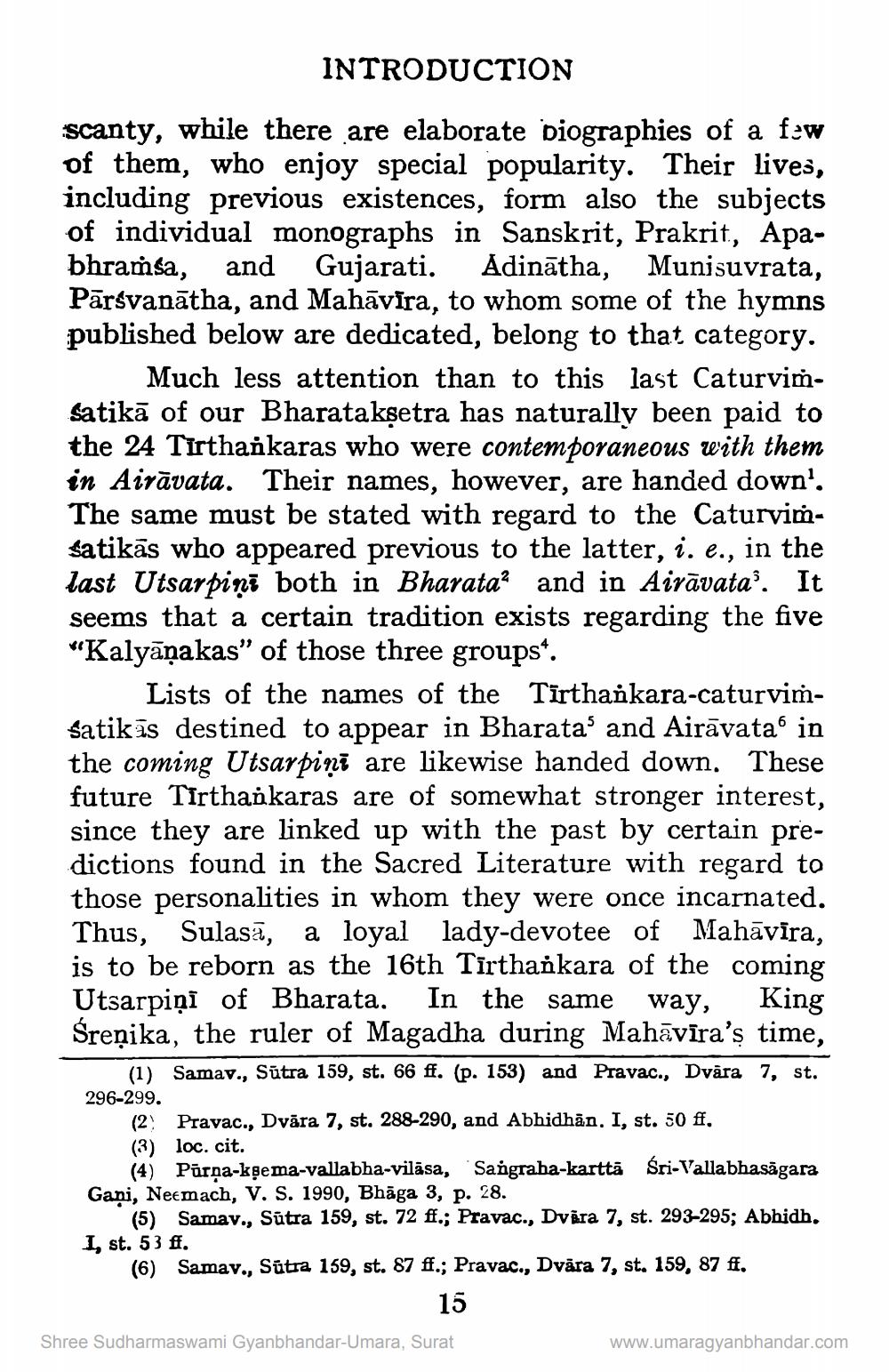________________
INTRODUCTION
scanty, while there are elaborate biographies of a few of them, who enjoy special popularity. Their lives, including previous existences, form also the subjects of individual monographs in Sanskrit, Prakrit, Apabhramsa, and Gujarati. Adinātha, Munisuvrata, Pārsvanātha, and Mahāvīra, to whom some of the hymns published below are dedicated, belong to that category.
Much less attention than to this last Caturvim. satikā of our Bharataksetra has naturally been paid to the 24 Tirthaikaras who were contemporaneous with them in Airāvata. Their names, however, are handed down'. The same must be stated with regard to the Caturvimsatikās who appeared previous to the latter, i. e., in the last Utsarpiņā both in Bharataand in Airāvata?. It seems that a certain tradition exists regarding the five "Kalyāņakas” of those three groupse.
Lists of the names of the Tirthankara-caturvimSatikās destined to appear in Bharata and Airāvata in the coming Utsarpiņi are likewise handed down. These future Tirthankaras are of somewhat stronger interest, since they are linked up with the past by certain predictions found in the Sacred Literature with regard to those personalities in whom they were once incarnated. Thus, Sulasā, a loyal lady-devotee of Mahāvīra, is to be reborn as the 16th Tīrthaikara of the coming Utsarpiņi of Bharata. In the same way, King Sreņika, the ruler of Magadha during Mahāvīra's time,
(1) Samav., Sūtra 159, st. 66 ff. (p. 153) and Pravac., Dvāra 7, st. 296-299.
(2) Pravac., Dvāra 7, st. 288-290, and Abhidhān. I, st. 50 ff, (3) loc. cit.
(4) Pärna-kşema-vallabha-vilāsa, Sangraha-kartta Sri-Vallabhasāgara Gani, Neemach, V. S. 1990, Bhāga 3, p. 28.
(5) Samav., Sūtra 159, st. 72 ff.; Pravac., Dvira 7, st. 293-295; Abhidh. I, st. 53 ff. (6) Samav., Sūtra 159, st. 87 ff.; Pravac., Dvära 7, st. 159, 87 ff.
15
Shree Sudharmaswami Gyanbhandar-Umara, Surat
www.umaragyanbhandar.com




